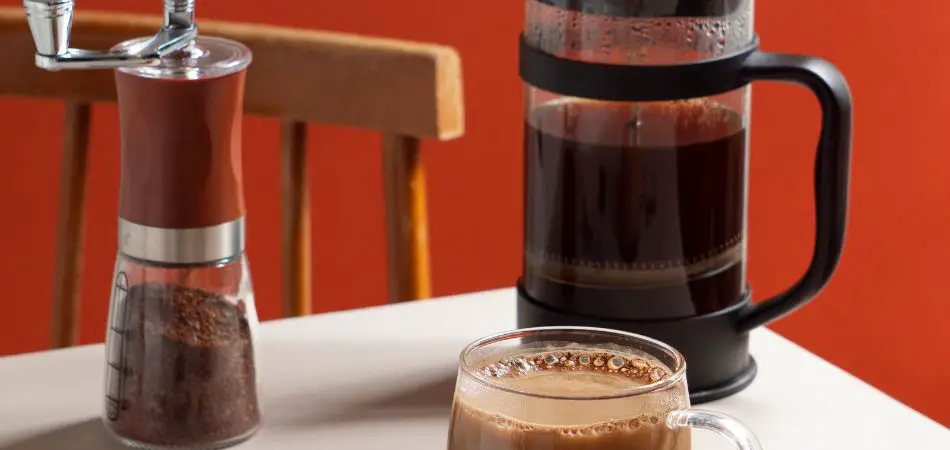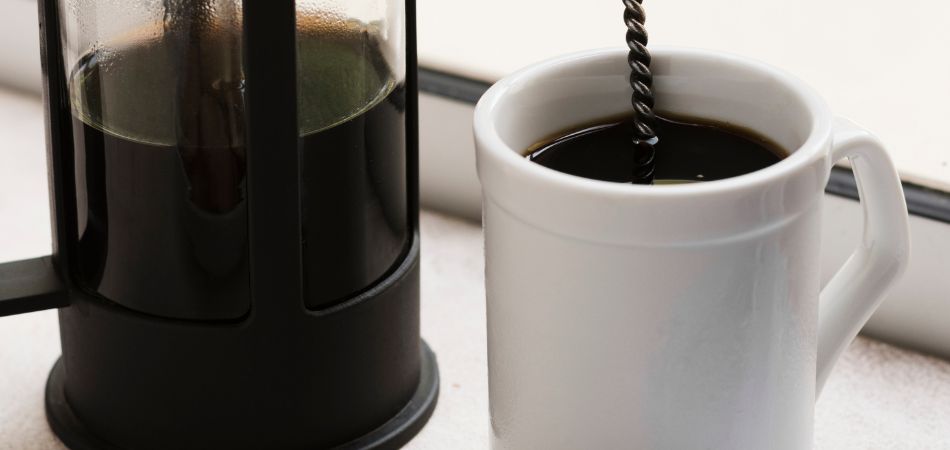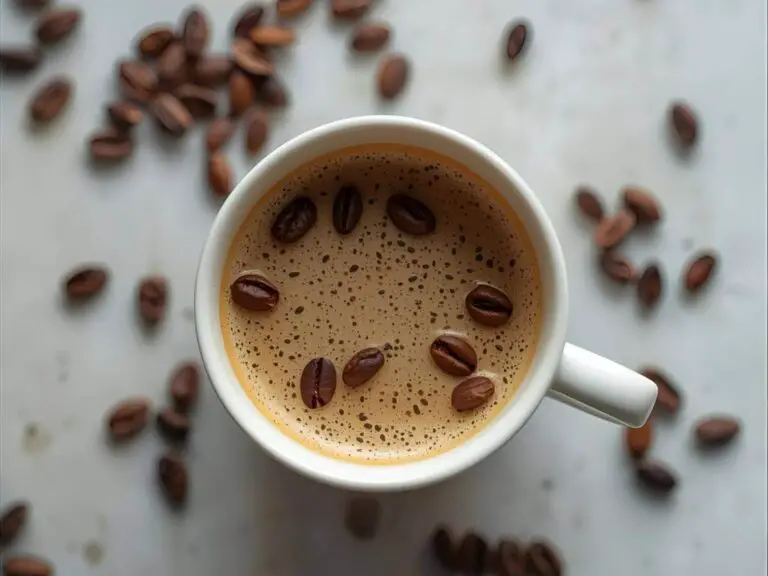What is a French Press Coffee Maker? Timeless Way to Brew Bold Coffe
Picture this: You wake up to the rich, deep aroma of freshly brewed coffee—no expensive machines, no complicated settings. Just pure, bold flavor in every sip. That’s the beauty of a French Press coffee maker (also called a cafetière or press pot).
If you love coffee but hate weak, paper-filtered brews, the French Press is your new best friend. It’s simple, affordable, and delivers a full-bodied, aromatic cup that drip coffee just can’t match.
In this guide, we’ll cover:
✔ What exactly a French Press is (and how it works).
✔ Why coffee geeks swear by it (hint: flavor control!).
✔ Step-by-step brewing secrets (avoid bitter, muddy coffee!).
✔ How it compares to other brewing methods (drip, espresso, AeroPress).
✔ Pro tips for choosing the best French Press (glass vs. stainless steel?).
Ready to brew like a barista? Let’s dive in!

What is a French Press Coffee Maker? (Simple Definition & Parts)
A French Press is a manual coffee brewer that uses immersion brewing—meaning coffee grounds soak in hot water before being separated by a metal filter. Unlike drip machines, it keeps natural oils and fine coffee particles, giving you a richer, more flavorful cup.
Key Components of a French Press
Here’s what makes up this genius little device:
| Part | Function |
|---|---|
| Carafe (Glass/Metal) | Holds coffee and water. Glass is classic; stainless steel keeps heat longer. |
| Plunger & Filter | Presses down to trap grounds at the bottom. Metal filters allow oils to pass through. |
| Lid | Keeps heat in while steeping. |
How Does a French Press Work? (Simple Science!)
- Coarse coffee grounds steep in hot water (like tea).
- After 4 minutes, you press the plunger down.
- The metal mesh filter separates the grounds from the liquid.
- Result? A bold, full-flavored coffee with no paper-filtered blandness.
Why It’s Better Than Drip Coffee?
- More flavor (oils aren’t trapped by paper).
- No electricity needed (great for camping/travel).
- Total control (adjust brew time, grind size, temperature).

The Fascinating History of the French Press
Who Invented the French Press?
While the concept dates back to 19th-century France, the modern French Press was patented by Attilio Calimani (Italy, 1929) and later refined by Faliero Bondanini (France, 1950s).
How It Evolved
- Early versions: Basic metal filters in glass pots.
- 1950s: The “Chambord” design (still used today by Bodum).
- Today: Durable stainless steel, double-walled insulation, and travel-friendly models.
Fun Fact: The French Press almost disappeared in the 20th century—until specialty coffee lovers revived it for its unmatched flavor control.
Why Coffee Lovers Choose a French Press (5 Big Benefits!)
✅ 1. Richer, Bolder Flavor
- Paper filters (like in drip coffee) absorb oils—French Press keeps them, giving you a deeper taste.
✅ 2. Full Control Over Brewing
- Adjust:
- Grind size (coarse = best).
- Steeping time (4 mins = standard).
- Water temperature (195°F–205°F = ideal).
✅ 3. No Electricity Needed
- Perfect for camping, travel, or power outages.
✅ 4. Eco-Friendly (No Waste!)
- Reusable filter = no paper waste (unlike drip machines).
✅ 5. Multi-Purpose (Not Just Coffee!)
- Brew loose-leaf tea, cold brew, or even froth milk for lattes.

How to Use a French Press (Step-by-Step Guide)
What You’ll Need:
✔ French Press
✔ Coarse-ground coffee (freshly ground = best!)
✔ Hot water (just off boil, ~200°F)
✔ Timer
Step 1: Preheat the Carafe
- Rinse with hot water to keep coffee hotter longer.
Step 2: Add Coffee
- Ratio: 1:15 (e.g., 30g coffee for 450ml water).
Step 3: Pour Water & Stir
- Wet all grounds evenly (prevents clumping).
Step 4: Steep for 4 Minutes
- Too short? Weak coffee. Too long? Bitter coffee.
Step 5: Press Slowly & Pour
- Don’t let it sit—it keeps extracting (and turns bitter).
Pro Tip: Use a gooseneck kettle for precise pouring!
Common French Press Mistakes (And How to Fix Them)
❌ Mistake #1: Using Fine Grounds
→ Fix: Coarse grind only (like sea salt). Fine = bitter sludge.
❌ Mistake #2: Over-Steeping
→ Fix: Set a timer for 4 minutes. Longer = over-extracted.
❌ Mistake #3: Not Cleaning Properly
→ Fix: Disassemble & wash after each use (oils go rancid).
French Press vs. Other Brewing Methods (Which is Best?)
| Feature | French Press | Drip Coffee | Espresso |
|---|---|---|---|
| Flavor | Bold, oily | Clean, mild | Intense |
| Brew Time | 4–5 min | 5–6 min | 25–30 sec |
| Ease of Use | Easy | Very easy | Hard |
Best For You If…
✔ You love strong, full-bodied coffee → French Press.
✔ You want convenience → Drip machine.
✔ You need a caffeine punch → Espresso.
How to Choose the Best French Press
Material Matters:
- Glass: Classic but fragile.
- Stainless Steel: Durable, insulated (keeps coffee hot longer).
Size Options:
- Single cup (12 oz) → For solo drinkers.
- Large (34 oz) → For families or entertaining.
Top Brands:
- Bodum (most popular).
- Espro (finer filters = less sediment).
- Frieling (premium stainless steel).
Creative Uses for a French Press (Beyond Coffee!)
✅ Cold Brew Coffee (Steep overnight for smooth, low-acid coffee).
✅ Loose-Leaf Tea (Better than tea bags!).
✅ Frothed Milk (For lattes & cappuccinos).
Final Thoughts: Why Every Coffee Lover Needs a French Press
If you want barista-level flavor at home—without expensive machines—a French Press is a must-try. It’s simple, affordable, and delivers the richest coffee you’ve ever tasted.
Ready to brew your best cup yet? Grab a French Press and start experimenting today!
FAQs
Q: What are the basic steps for a beginner to make French press coffee?
A: To make French press coffee, follow these simple steps:
- Boil water in a kettle.
- Grind your coffee beans to a medium-coarse consistency.
- Preheat your French press with hot water, then discard the water.
- Add the ground coffee to the French press.
- Pour hot water over the grounds, stir gently, and let it steep.
- After steeping, press down the plunger to separate the grounds from the liquid.
- Pour and enjoy your freshly brewed coffee.
Q: How can I achieve the best results when using a French press?
A: For optimal French press coffee, consider these tips:
- Measure coffee and water with a scale for precision.
- Invest in a quality grinder for consistent grounds.
- Use a medium-coarse to coarse grind size.
- Choose high-quality water to enhance flavor.
- Use the correct amount of coffee for a rich taste.
- Preheat the French press before brewing.
- Use hot (but not boiling) water to avoid burning the grounds.
- Initially pour a small amount of water over the grounds to allow them to “bloom.”
Q: Is the French press a good coffee-making method for beginners?
A: Yes, the French press is an excellent choice for beginners. It is straightforward to use, produces a rich and full-flavored cup of coffee, and doesn’t require any specialized equipment.
Q: What is the simplest way to use a French press for those unfamiliar with the process?
A: The simplest way to use a French press involves adding ground coffee to the pot, pouring in hot water, letting it steep, then pressing the plunger to separate the coffee from the grounds. Serve immediately for best flavor.




